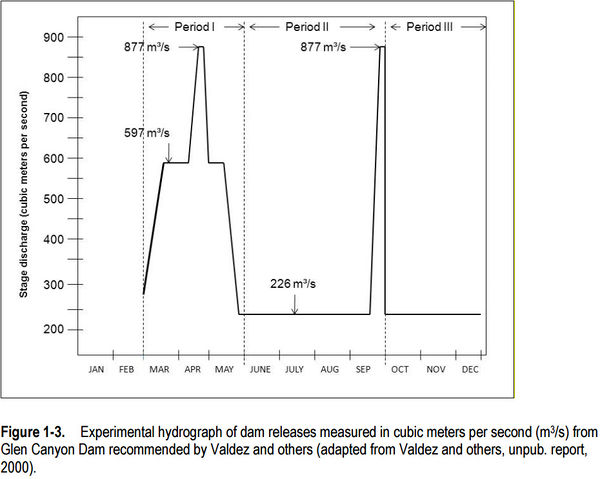Difference between revisions of "Low Summer Flow Experiment"
Cellsworth (Talk | contribs) |
Cellsworth (Talk | contribs) |
||
| Line 107: | Line 107: | ||
*Modeling release temperatures far enough in advance to start making releases to meet annual release requirements. | *Modeling release temperatures far enough in advance to start making releases to meet annual release requirements. | ||
*Scheduling monthly releases in order to meet annual release requirements while dealing with uncertainties in inflow forecasts. | *Scheduling monthly releases in order to meet annual release requirements while dealing with uncertainties in inflow forecasts. | ||
| − | *Short notice for science planning to monitor affects. One of the primary flaws with the 2000 LSF was that due to the short amount of time available for planning and implementation and the lack of long-term monitoring, scientists were unable to determine whether or not the experiment | + | *Short notice for science planning to monitor affects. One of the primary flaws with the 2000 LSF was that due to the short amount of time available for planning and implementation and the lack of long-term monitoring, scientists were unable to determine whether or not the experiment achieved its objectives. |
|} | |} | ||
Revision as of 12:26, 3 May 2017
|
|
LTEMP Experimental Action: Aquatic Resource-Related Experimental Treatments (BA, pages 30-41) [1]Low summer flows may be tested in the second 10 years of the LTEMP period, for the purpose of achieving warmer river temperatures (≥14°C) to benefit humpback chub and other native species. Under low summer flows, daily fluctuations would be less than under base operations (e.g., approximately 2,000 cfs). Investigating the anticipated effects of and options for providing warmer water temperatures in the mainstem Colorado River through Grand Canyon is an identified management action in the Humpback Chub Recovery Goals (USFWS 2002a). |
| --- |
--- |
--- |
|---|
|
|
